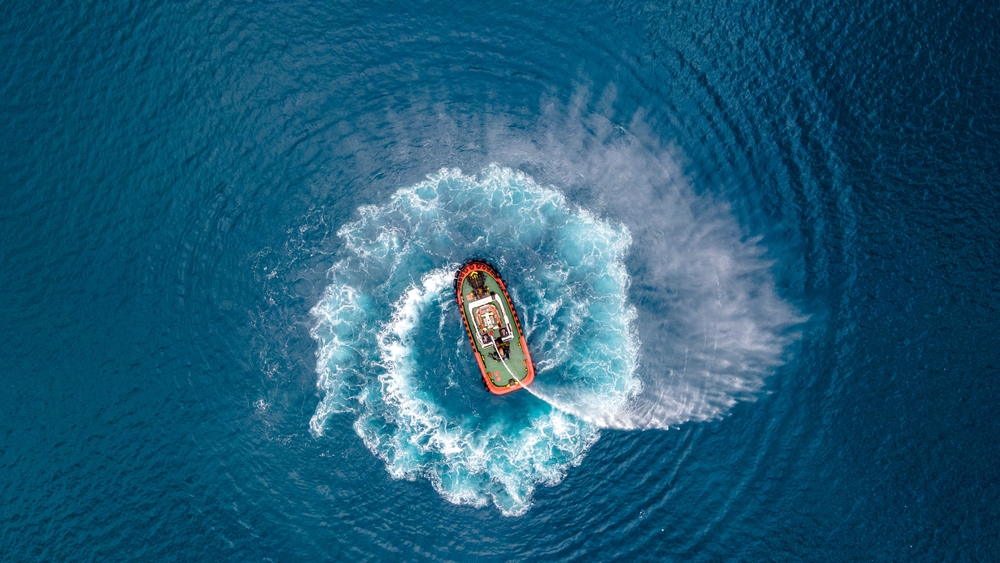

Girting – Communication is vital

This article argues that over-reliance on the ability of a tug and its crew to be able to prevent the vessel from capsizing is common to many incidents.
have not been on board a girting tug, nor want to be. I do know that when a yacht broaches in high winds or a dinghy gybes and capsizes it happens very quickly. Once the inversion process has begun it is invariably too late to stop it. Reviewing the latest UK Marine Accident and Investigation Branch (MAIB) reports on girting and capsizing incidents, one has to feel for the predicament of the crew.
Girting has been defined as when high athwartships towing forces cause a tug to be pulled sideways through the water by the towline. If the tug is unable to manoeuvre out of this position it is likely to capsize.
With the benefit of hindsight all accidents are preventable and there is much to be learnt from the following five MAIB reports on tug capsize incidents.
The first was Trijne in 1998, when the tug attempted a peel-off turn, from where it was running ahead of the assisted vessel’s starboard quarter, to her port quarter. The towline came tight across the tug’s beam heeling it over with water over the aft deck. The coxswain could not break out of the girting and the vessel capsized with the loss of a deckhand.
Then came Flying Phantom, which capsized in fog with the loss of three of her four crew in 2007. The main recommendations, aside from operations in fog, were in relation to the use of quick release and the securing of openings to avoid downflooding.
In the case of Ijsselstroom in 2009, the tug was acting as stern tug to a barge. As the flotilla increased speed, the tugmaster was unable to control the tug’s yawing motion, it took a large sheer to starboard and was girted. The tug was criticised for connecting without a gog rope and for failure to operate the towline’s emergency release.
More recently, in March 2015, at Fawley Terminal in Southampton Water, Asterix, a mooring launch with towing ability, capsized while assisting a departing tanker in windy conditions. Asterix was deployed to pull the tanker’s stern away from the berth. However it did not then succeed in turning port to run with the tanker prior to letting go.
Had her adjustable gog rope been at the optimal length that might have assisted the tug to turn on its axis. The tanker gained way and the tug was pulled over. An attempt to operate the emergency towing hook release was unsuccessful. Miraculously, no-one on board was hurt.
Most recently MAIB has reported on the case of Dominique, a 16m-long tug, involved in an incident where all five crew drowned (see page 24). In September 2015, at a port in Madagascar, the tug was connected to the port quarter of a UK-managed vessel to assist in pulling her stern off the berth. The tide took the vessel down towards an outlying mooring dolphin so the vessel’s master manoeuvred ahead, for a brief time at full ahead, under hard starboard helm, quickly reaching 5.4 knots.
Dominique, which appears to have been still pulling at full power, was unable to counter the effects of the movement, girted and capsized. The tug was criticised for not being fitted with a gog rope and having no emergency quick release.
In all these cases the operation, set-up of the tugs or training of their crew were criticised, with the absence of or ineffectual use of gog ropes and/or quick release systems standing out as significant.
However, it would be wrong to conclude that tugs are therefore to be considered always at fault. For example, quick release systems are designed not to prevent tugs getting into trouble, but rather to save them from capsize when all else fails. While important, and critical to the safety of crew, the failure to utilise a quick release should not exonerate an assisted vessel from an ill-considered manoeuvre: a tug is attached to a vessel at the end of a towline and what the assisted vessel does or does not do has a direct effect upon the smaller and more vulnerable craft.
More specifically, in Trijne’s case the pilot could not see the tug from the bridge and wrongly assumed that it had been running with the ship stern to stern rather than off the quarter. Nor was he aware that the tug’s coxswain was a novice.
In the Flying Phantom incident, the port had failed, despite a previous accident in fog, to implement operational limits or procedures for tug operations in restricted visibility.
With Ijsselstroom, it was found that the pilot was unaware whether the tug was towing over her bow or stern and he had no knowledge of its operational limitations.
In the Asterix case, no-one on board the assisted vessel was monitoring the mooring launch. The coxswain was not advised that the tanker was about to come ahead. The lookout saw the launch in difficulty, but a call to the bridge to stop engines received no response. Evidently the pilot relied on tugmasters to act autonomously and inform him when in doubt or difficulty, diminishing reliance on proactive communication.
In the Dominique incident, the pilot and master became focused on trying to prevent the ship’s stern from making contact with the mooring dolphin. Their intention to proceed ahead was not then communicated to the tug. This omission resulted in the ship moving rapidly ahead before the tug could manoeuvre into a safe position.
Common to these cases appears to be an over-reliance on the tug and its crew being capable of preventing the tug from girting and capsizing. Critically, MAIB has recommended that vessels should ensure that the limitations of tugs and how they are to be operated are identified and understood by the bridge team. Further, there should be proactive communications and an agreed means for monitoring the tug throughout the towing operation to reduce the risk of the tug girting should the manoeuvre not go according to plan.
Reproduced with kind permission of International Tug & OSV magazine. View original article.

